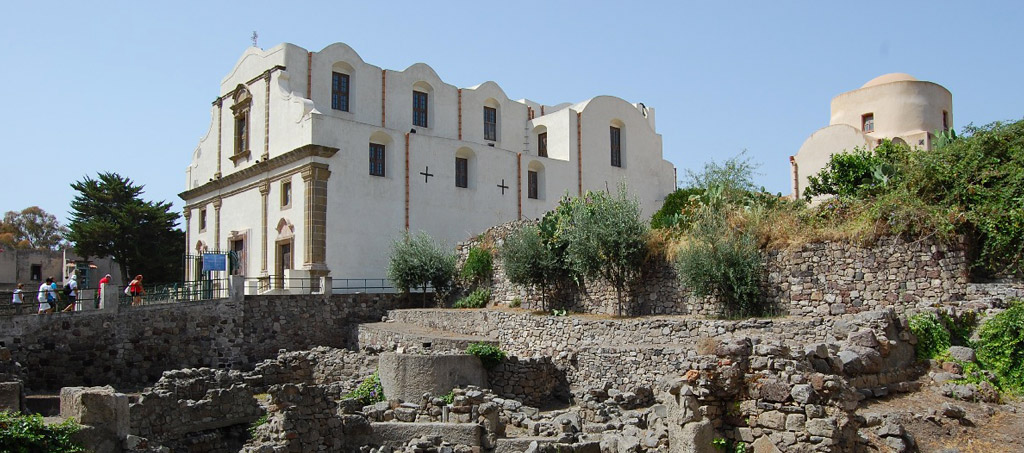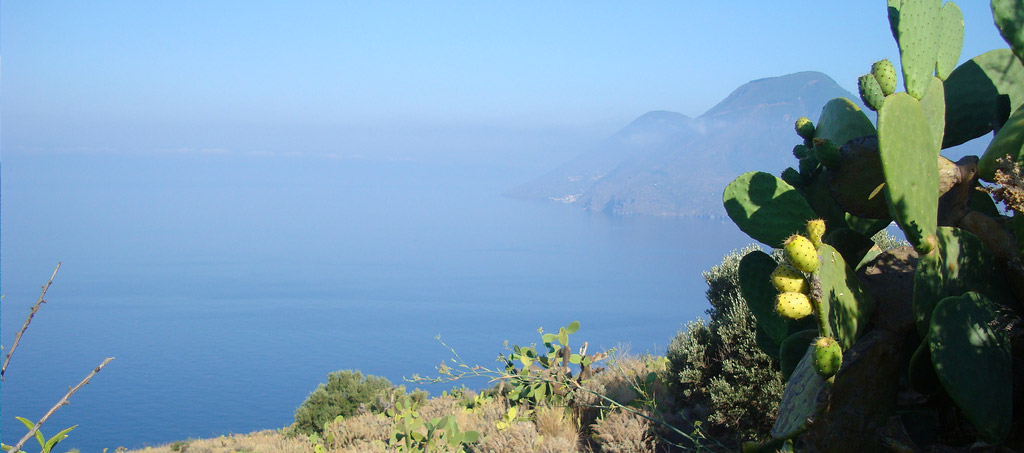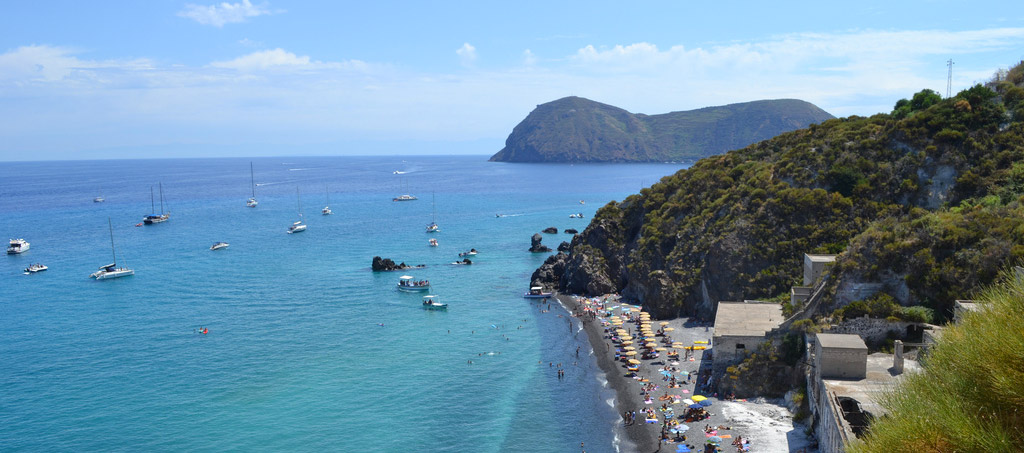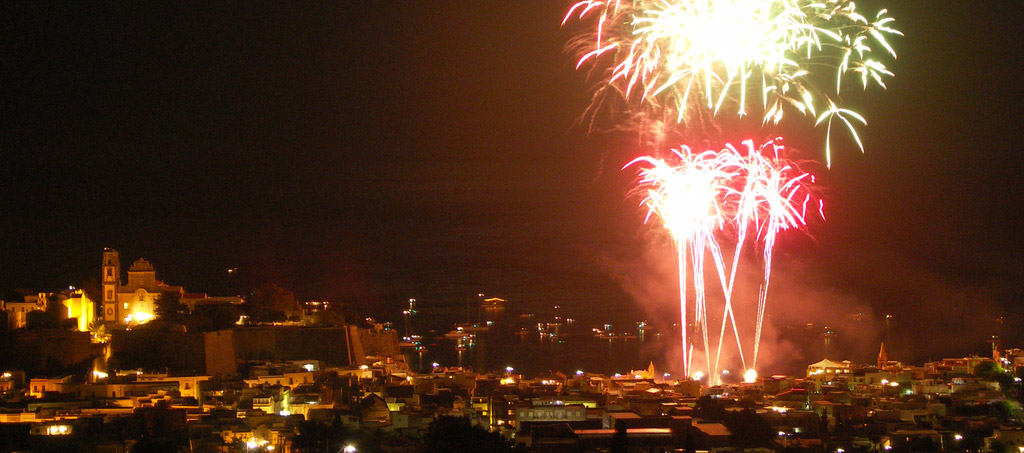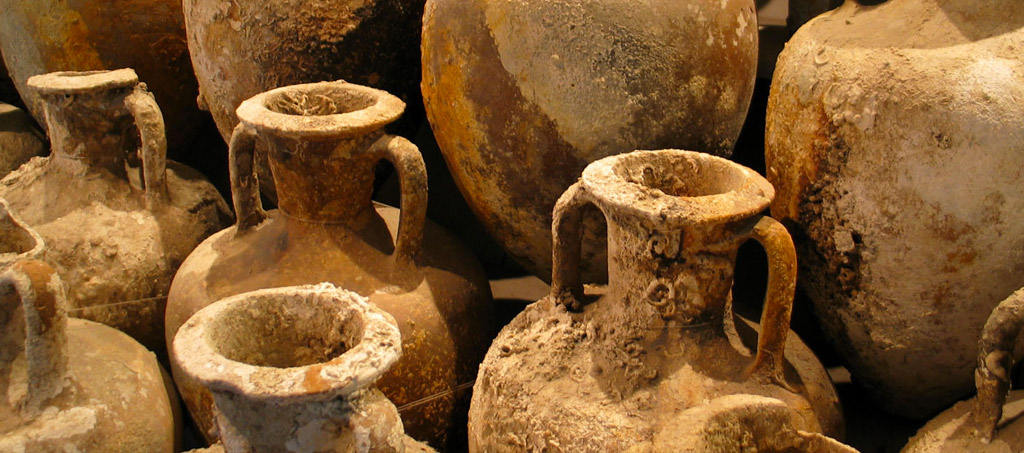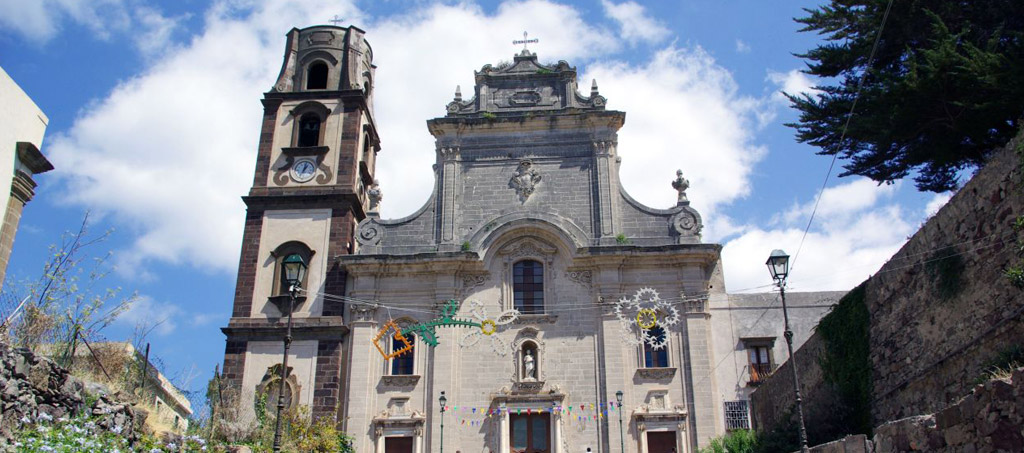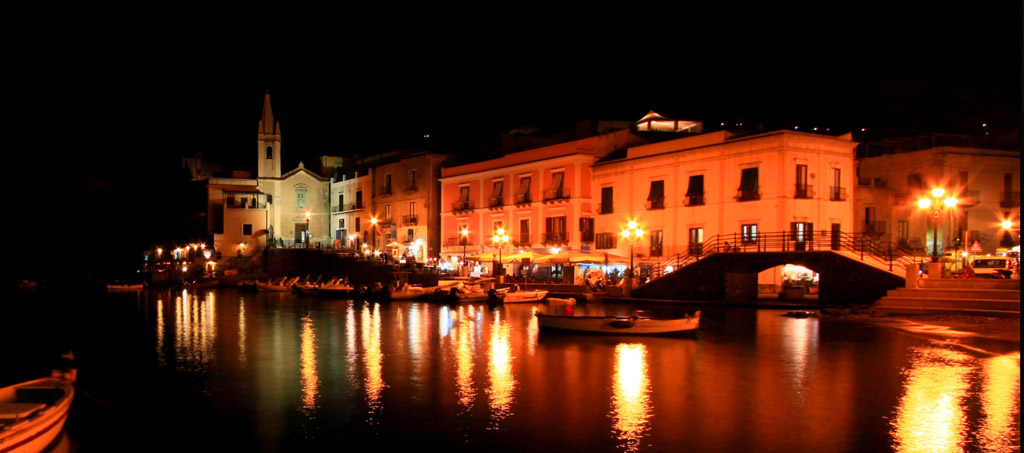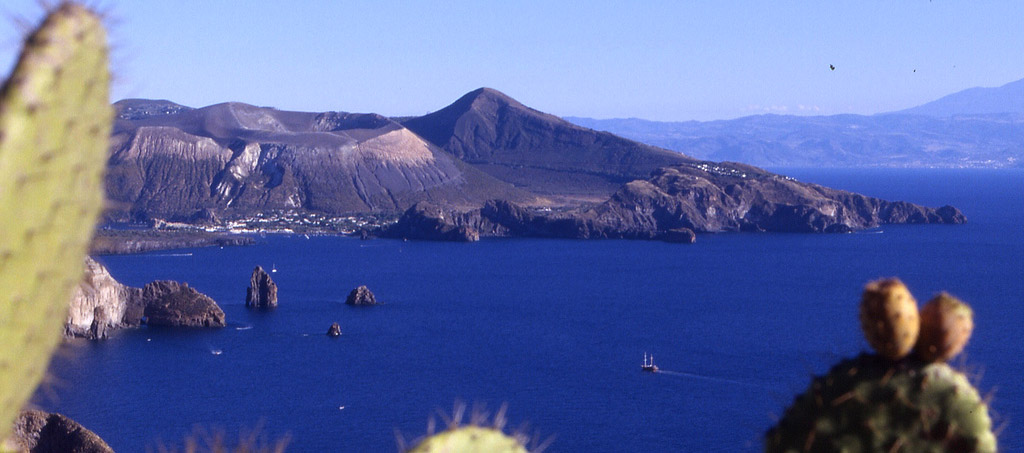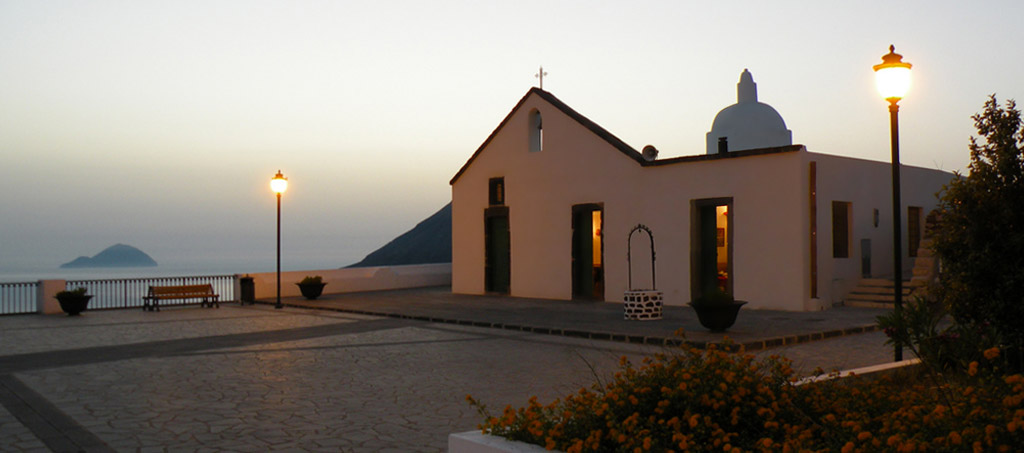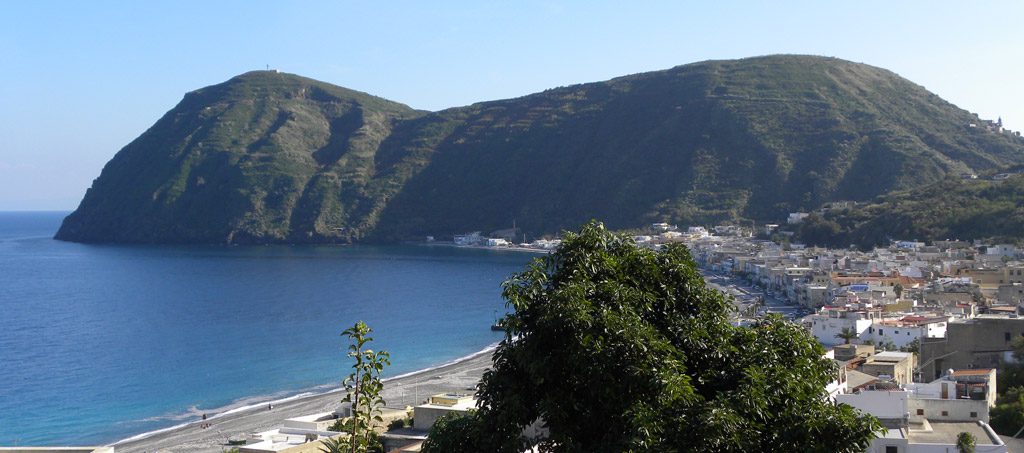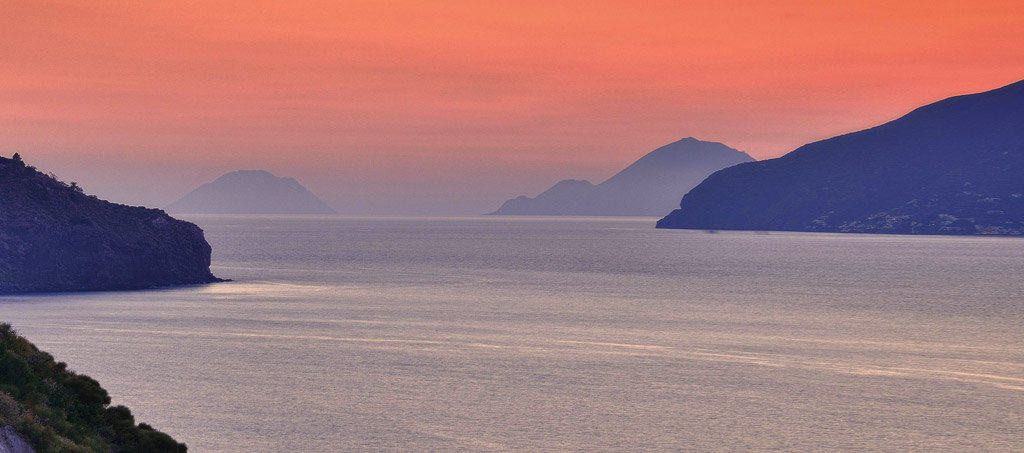Lipari
Island surface 37,6 squares kms.
Island districts:
• CANNETO
• ACQUACALDA
• QUATTROPANI
• PIANOCONTEThe charm and complexity of the Lipari coastlines can’t help but bewitch whover has the fortune to visit them. Going from Marina Corta, and moving in a clockwise direction, the first point of interest is the geological formation of the lavic duomo of the castle, from which the ancient acropolis rose.
The twin domes of Mount Rosa follow. Then you come to the bay of Canneto, with it’s characteristic houses along the beachfront, and directly facing behind them is the crater of Forgia Vecchia rich in obsidian deposits.
Further on are a series of gorgeous beaches, some of which are abandoned industrial sites and long bridges, once used for the production of pumice stone , one of which is still in use today, Porticello. The white of the pumice stone creates lovely sandy beaches and enhances the varied blue hues of the sea.
From Porticello it is possible to observe both the outstanding sections of the eastern border of the pumice cone of Mount Pilato, made bare by the extraction activity,and also the side of the powerful obsidian stream of the Red Rocks.
Going past Point Castagna, one encounters the district of Acquacalda (hot water), while the double Point of Legno Nero (Black Wood) changes the appearance of the coasts: the slopes become more imposing. The western coast is mainly exposed to winds coming from the north-west quadrant.
This coast is the most ancient, and the bays of Palmeto and Cala Fico alternate with the rock formations of the Torricelle and the Pietra Del Bagno.
Proceeding further one comes across the Valle Muria beach, picturesque rocks under Mount Guardia, The Formiche (ants) rock formations, Pietra Lunga and Pietra Menalda, the beautiful beach of Vinci, on which the Geophisico Observatory of Lipari faces.
Once having gone past Crapazza one returns, travelling along coastal areas with small inlets on the eastern side, towards the point of departure of Marina Corta.

